Victor Costa, a name synonymous with accessible luxury and timeless elegance, has made an indelible mark on the American fashion landscape. Born on December 17, 1935, Costa began his illustrious career by bringing high-end European styles to the masses, earning him the nickname “King of Copycats.” By the mid-1970s, his designs were celebrated for their flamboyant, super-feminine silhouettes that were both sophisticated and affordable. Costa’s ability to capture the essence of European haute couture and adapt it to the American market made him a household name, particularly among those who sought glamour without the extravagant price tag. His creations, known for their meticulous attention to detail and dramatic flair, quickly garnered a loyal following among some of the most stylish women in America, including First Ladies and Hollywood starlets.
Costa’s rise to fame was rooted in his ability to interpret and recreate the essence of European fashion, a skill he honed early in his career while working for notable design houses like Suzy Perette. His approach was revolutionary: rather than simply mimicking high fashion, Costa infused his designs with a unique blend of American practicality and European elegance. This vision led him to establish his own fashion house in Dallas, where he quickly became a force to be reckoned with in the industry. His collections, which were eagerly snapped up by luxury retailers like Saks Fifth Avenue, Neiman Marcus, and Bergdorf Goodman, reflected his keen understanding of what his clients wanted—luxurious, statement-making pieces that could stand the test of time.
Throughout the 1980s and 1990s, Costa’s influence continued to grow as he expanded his brand to include bridal wear and other special occasion attire. His knack for creating stunning, wearable art kept his designs in high demand, not just in high-end department stores but also on television shopping networks like QVC, where his collections achieved phenomenal success. Today, Costa’s legacy is cemented not only by his contribution to fashion but also by the enduring appeal of his designs, which continue to be cherished by vintage fashion enthusiasts and collectors around the world. His work remains a testament to his ability to blend glamour with accessibility, making him a true icon in the world of fashion.
Y2K Victor Costa Interview
How to tell if Victor Costa is vintage from the logo
Victor Costa is renowned for his stylish and sophisticated designs, particularly his glamorous evening wear. Over the decades, the Victor Costa logo has undergone several changes, reflecting the evolving aesthetic of the brand. By analyzing the logo on Victor Costa garments, you can often determine the era from which the piece originates. Below is a breakdown of the Victor Costa logos used over the years based on the images provided.
1960s to 1990s Victor Costa logo
- The earliest Victor Costa logo from the 1960s to 1990s is characterized by a more playful and script-like font.
- The letters are rounded, with a sense of movement, reflecting the bold and creative styles that Victor Costa was known for during this time.
- This logo often appears on tags with a textured background, indicating its vintage nature.

1960s to 1990s Victor Costa logo
1980s to 2000s Victor Costa logo
- In the 1980s to 2000s, the Victor Costa logo transitioned to a more refined and minimalist style.
- The font became sharper and more geometric, with a straightforward, capitalized format that conveys elegance and modernity.
- This period marked a shift towards more structured and formal designs, which is reflected in the logo’s cleaner appearance.

1980s to 2000s Victor Costa logo
1990s to 2000s Victor Costa logo
- During the 1990s to 2000s, the logo saw slight modifications, with a bolder, more pronounced font.
- The letters are thicker and more closely spaced, giving the logo a strong and confident presence.
- This version of the logo is often associated with Victor Costa’s later works, which continued to embrace sophistication but with a more contemporary twist.

1990s to 2000s Victor Costa logo
How to tell if Victor Costa is vintage from the tags
Victor Costa has been a prominent name in fashion, known for his luxurious and ornate designs. Over the decades, the brand’s tags have evolved, reflecting changes in style, manufacturing, and branding. From the early days in the 1960s to the more modern eras, each period has distinct characteristics that can help identify the vintage nature of a Victor Costa piece.
Can’t identify those vintage tags or labels? Upload a picture on our vintage tag identification page, and we’ll help you out!
1960s vintage Victor Costa tags
- Features the early Victor Costa branding with a more script-like font.
- Simple and elegant design, often with the brand name taking center stage.
- Tags are typically rectangular with minimal additional information.
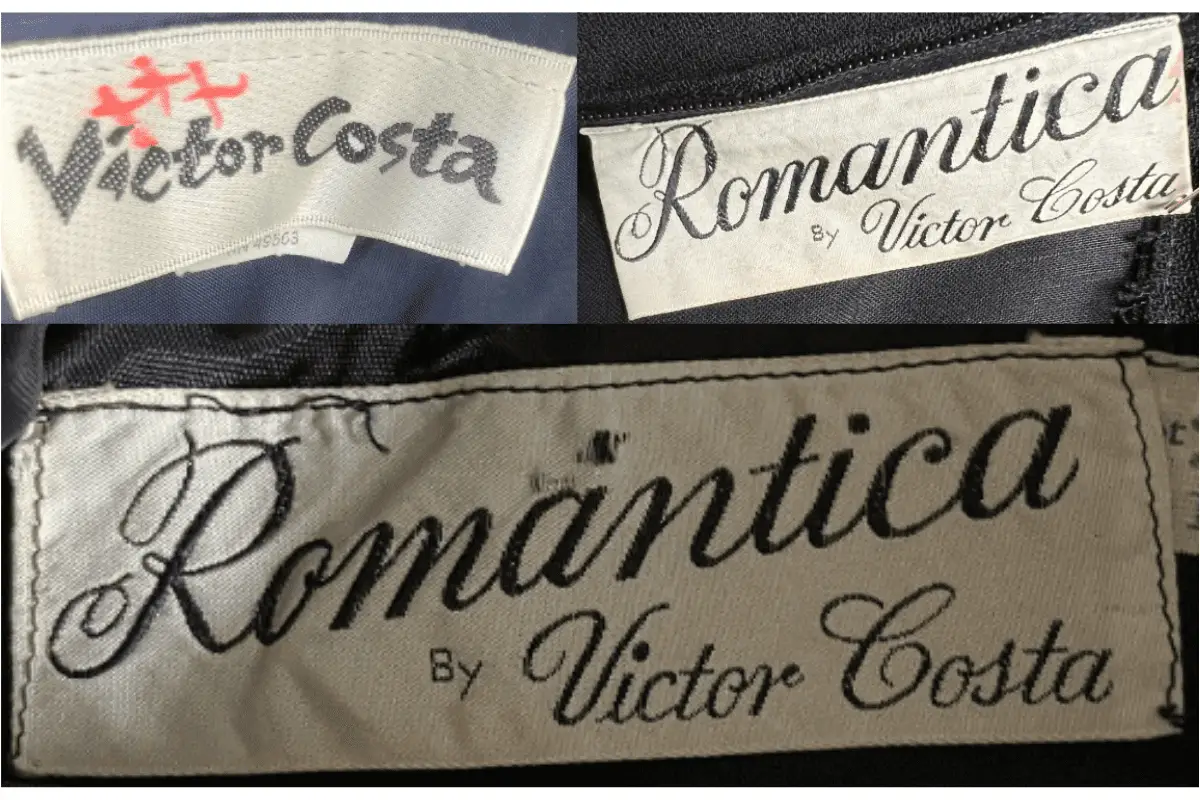
1960s Victor Costa tags
1970s vintage Victor Costa tags
- The branding still showcases a script-like font, but the logo is more refined.
- Tags may feature additional details like manufacturing information or retailer names.
- Commonly found on Victor Costa pieces designed for high-end retailers.
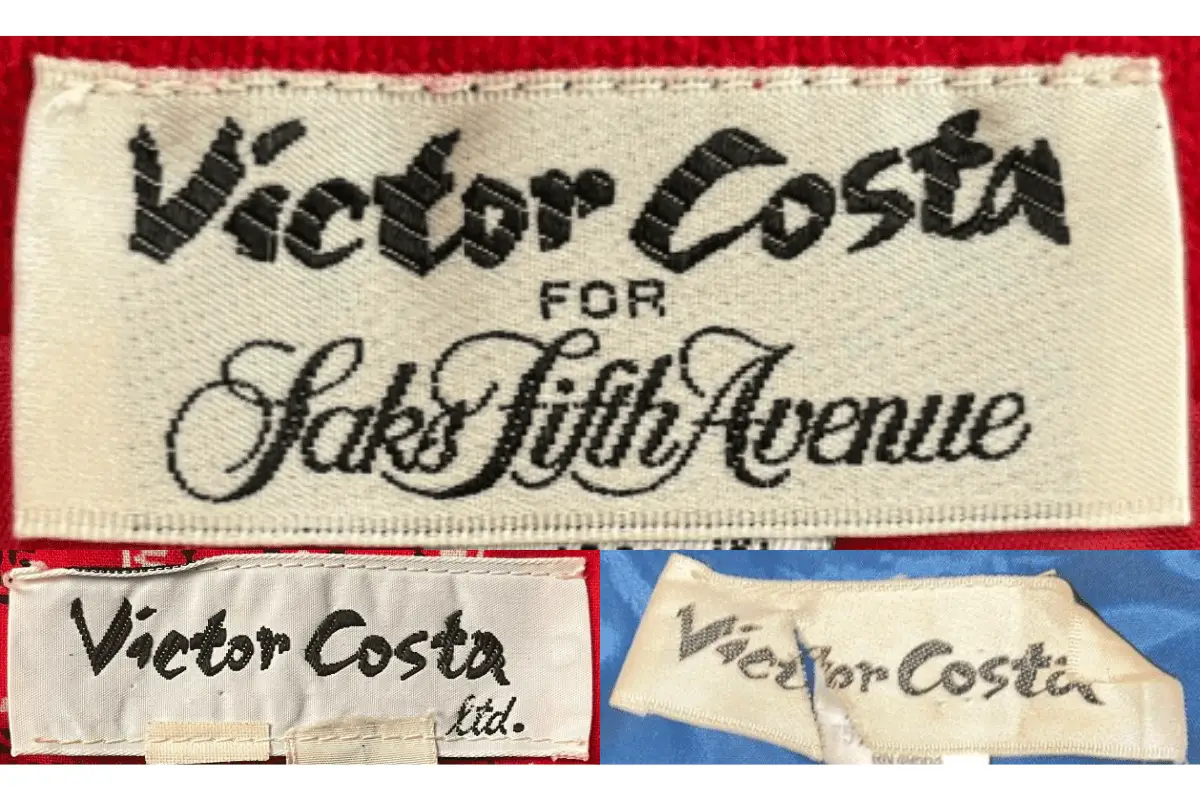
1970s Victor Costa tags
1980s vintage Victor Costa tags
- The font becomes bolder, with the brand name prominently displayed.
- Tags often include more detailed information, such as the fabric content and care instructions.
- Some tags during this era were made specifically for collaborations with luxury retailers like Saks Fifth Avenue.
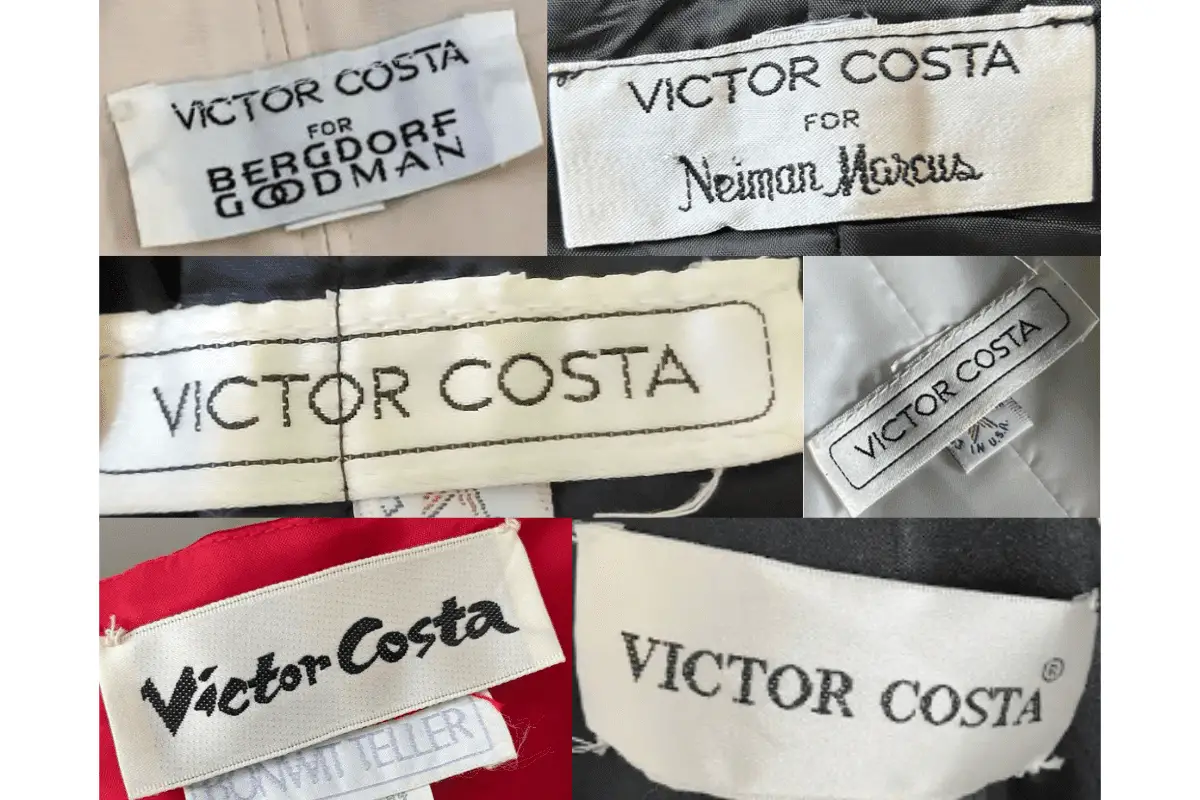
1980s Victor Costa tags
1990s vintage Victor Costa tags
- Tags in this era start to adopt a more modern look with sharper fonts.
- The logo is often in all caps with a clean, straightforward design.
- Size and care instructions are typically included on separate tags attached to the main label.
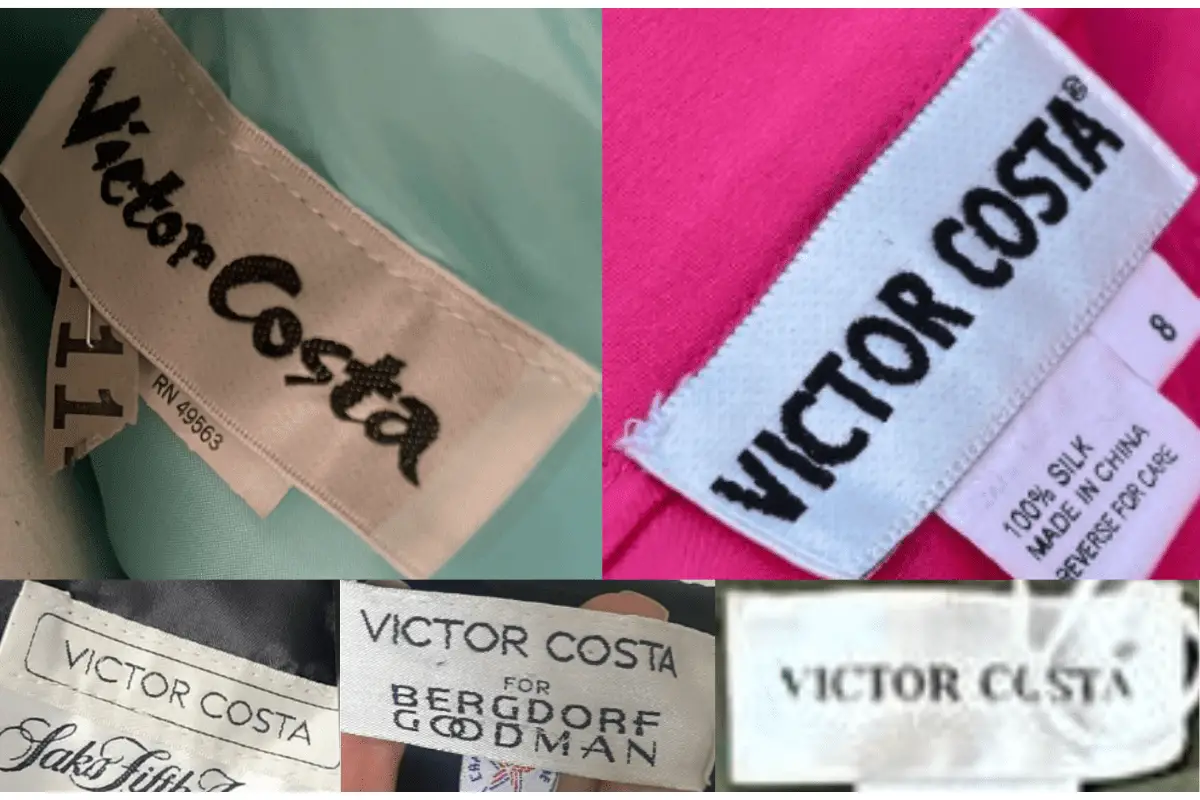
1990s Victor Costa tags
2000s vintage Victor Costa tags
- The branding evolves to a sleeker, more minimalist style.
- Tags are often looped, a common feature introduced in this era.
- Color schemes may vary, but the overall design remains simple and elegant, with the brand name as the focal point.
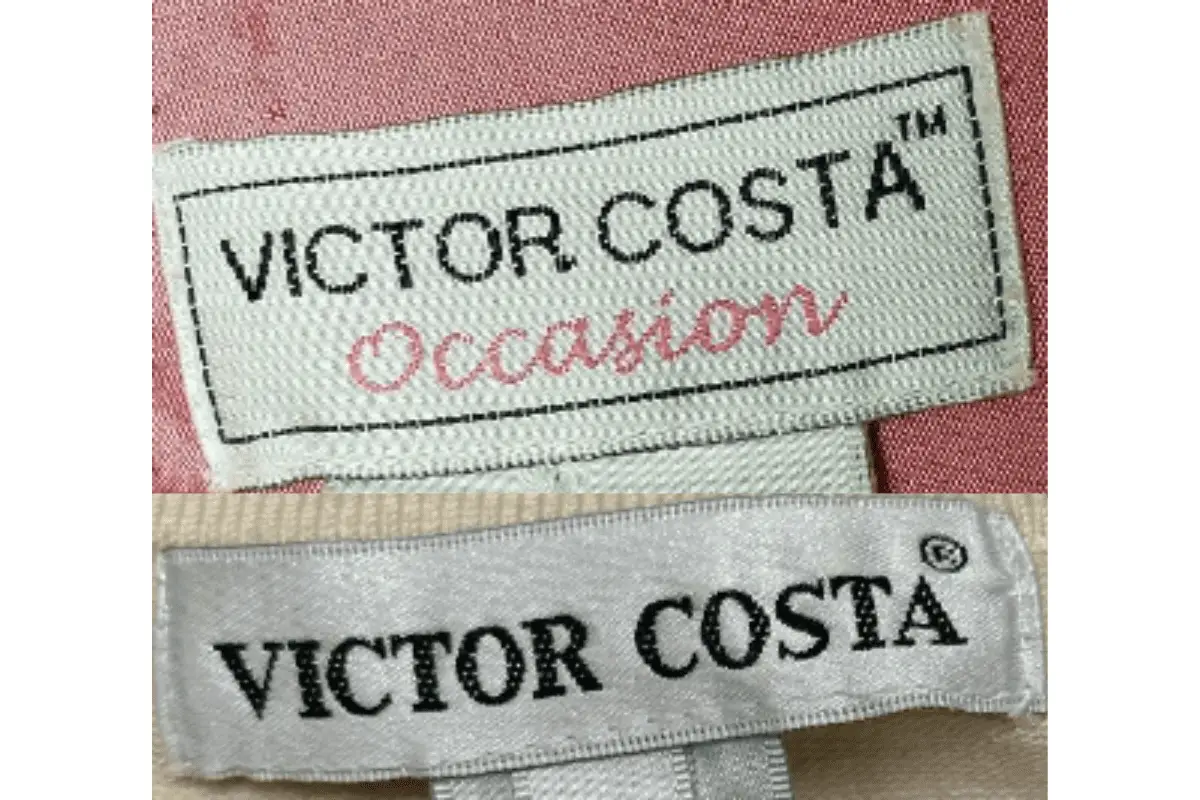
2000s Victor Costa tags
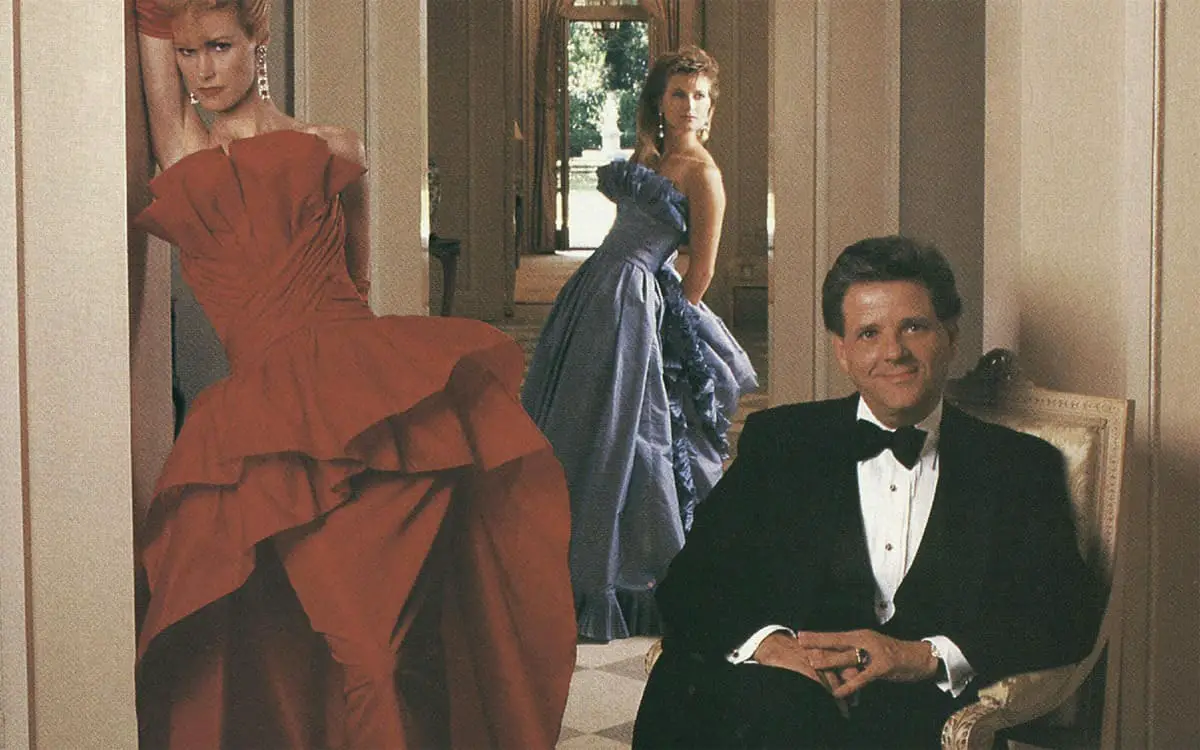



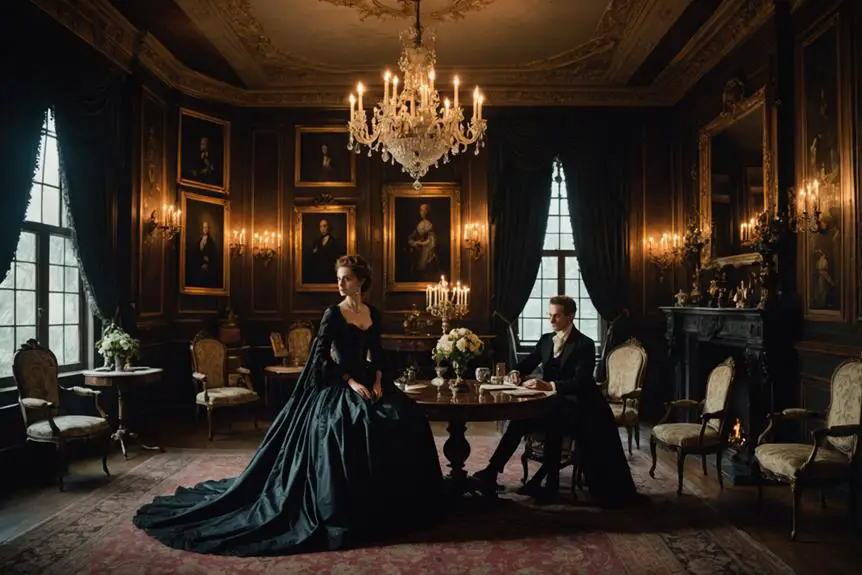
Someone essentially help to make seriously articles I would state. This is the very first time I frequented your web page and thus far? I amazed with the research you made to make this particular publish amazing. Fantastic job!
Aided me a lot, just what I was looking for : D.
whoah this weblog is fantastic i like studying your articles. Stay up the good work! You realize, lots of people are looking around for this information, you can help them greatly.